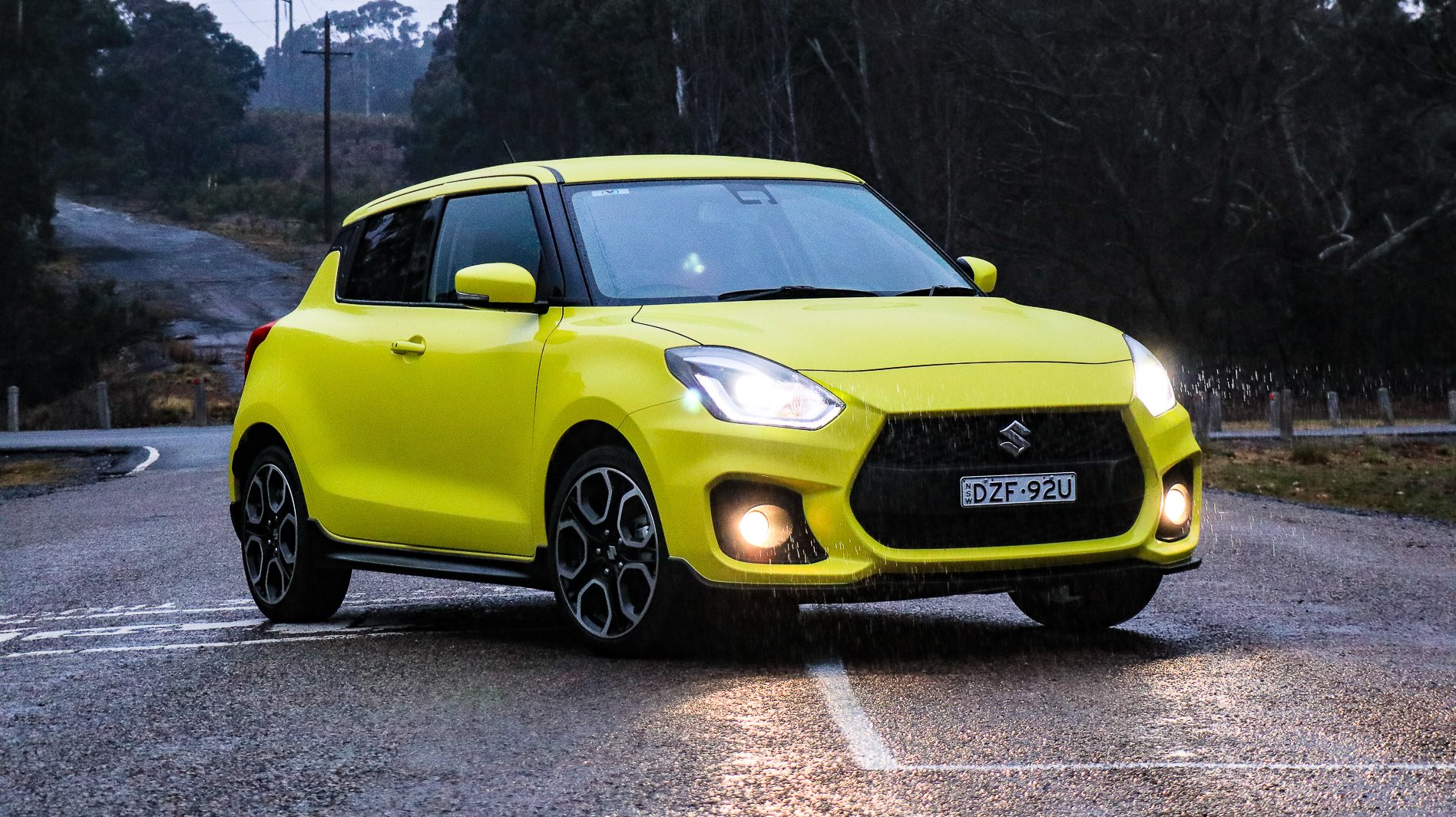
What is the Suzuki Swift Sport?
Back when I was a young lad, the prevailing winds for budding car nuts blew pretty strongly over the V8 heartlands. It was Ford Falcon, Holden Commodore or go the hell home, in the main.
The sub-culture of small, fast and fast had always been there, though, tracing its roots – for me, anyway – back to the ubiquitous Datsun 1600 of the 1970s through to the Toyota Corolla Twin Cam of the following decade.
There was another small-fry star of the time, too – the Suzuki Swift GTI of the mid-1990s used a free-revving 1.3-litre naturally aspirated four-cylinder engine co-developed with the company’s motorcycle division that used all of its 74kW to push around just 835kg.
With independent rear suspension and decent brakes, it was raucous, uncouth and an absolute barrel of laughs.
The Sport made a return with the last-gen Swift with a 1.6-litre nat-atmo four under the bonnet, and the all-new Swift begat a new-gen Sport in 2018.
The central tenant of the new Suzuki Swift Sport is the same – a small, front-drive five-door, five-seat hatchback, perky engine and a reasonable price – but the execution is definitely different.
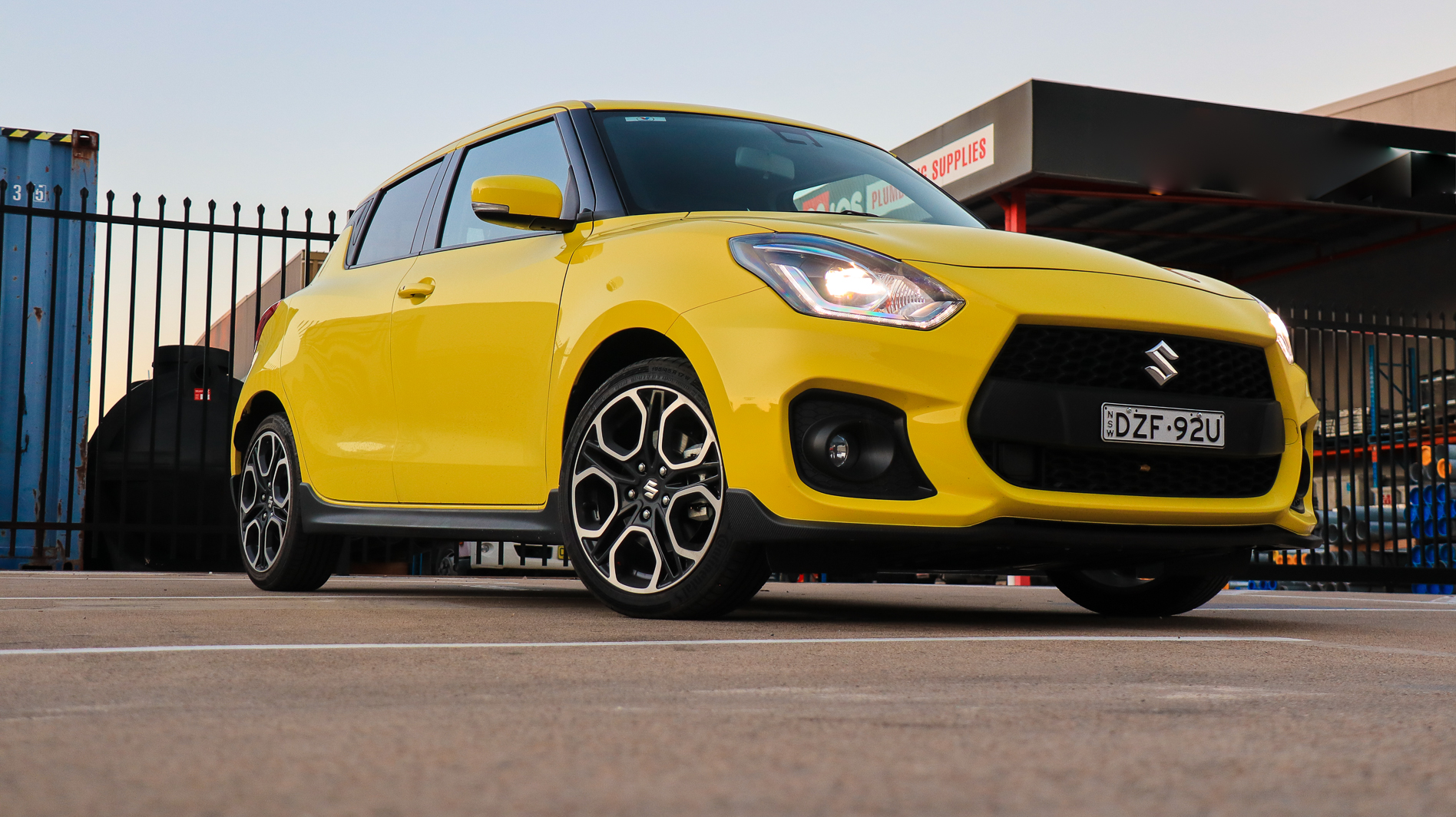
How much is the Suzuki Swift Sport?
The 1.6-litre naturally aspirated engine from the previous car is gone, replaced by a 1.4-litre turbocharged petrol four-cylinder engine out of the larger Vitara, backed by, in our case, a six-speed manual gearbox. (There’s also an auto available if you must.)
There’s no limited slip diff to regulate the 103kW and – more crucially – 230Nm of torque through the 17-inch wheels, and no driving mode button in sight, either.
Surprisingly, this car is some 90kg lighter than the 2017 model, according to Suzuki. At a claimed 970kg kerb weight, it’s some 145kg (or two passengers) heavier than the original 1990s GTI, and it’s also 14cm longer, 10cm taller and 20cm wider.
In the modern idiom, that’s not a bad weight figure – the modern Swift Sport is a lot safer, for one thing, and offers a lot more kit right out of the box.
At $25,490 plus on-roads, it’s some six grand cheaper than the dual-clutch equipped Volkswagen Polo GTI, which is (until the return of the Ford Fiesta ST, that is) the Swift Sport’s nearest competitor in terms of size.
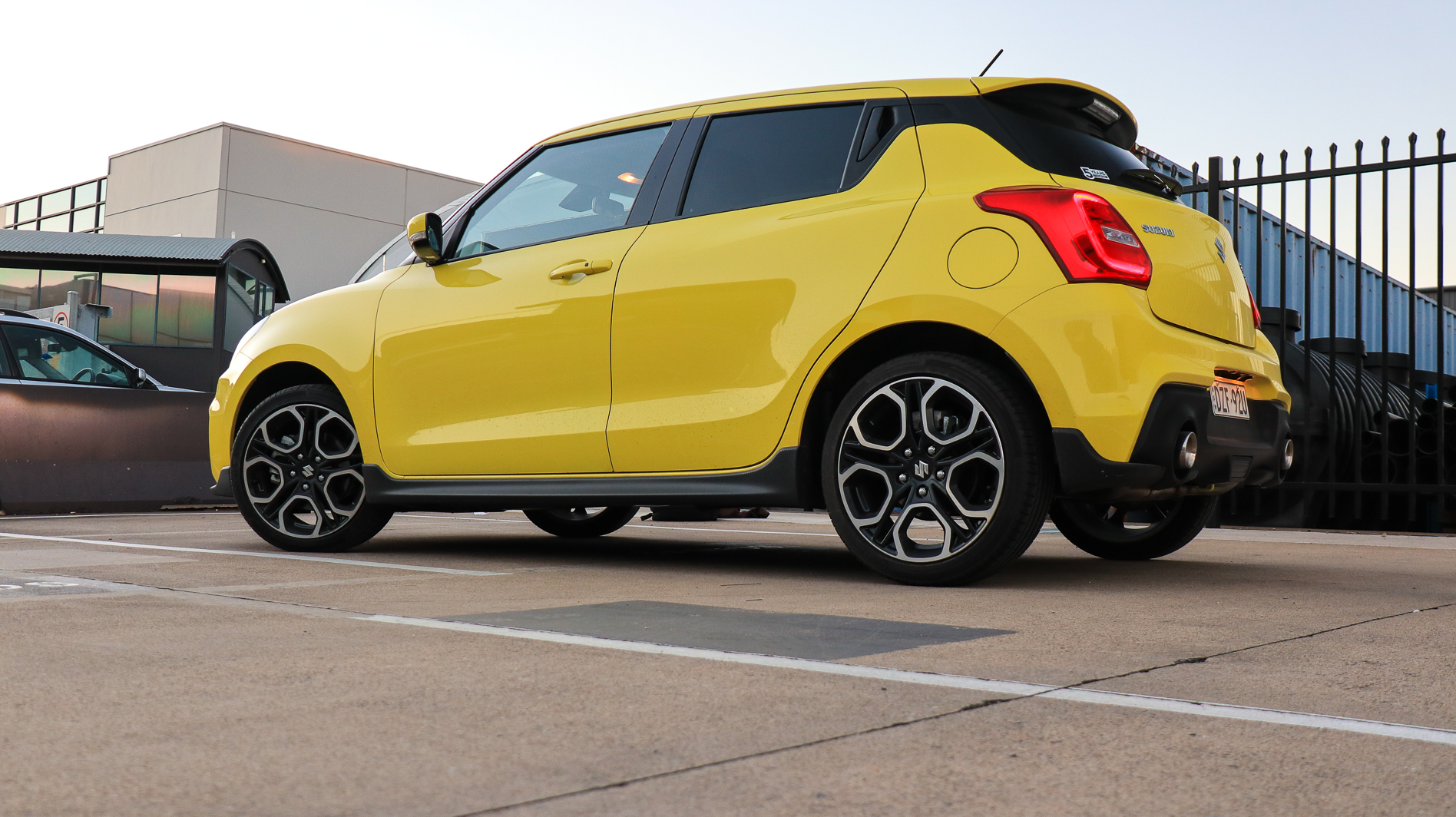
It’s worth pointing out that the Polo and the Fiesta offer expensive go-faster bits like limited slip diffs as standard, though.
For the money, the Swift Sport is pretty well equipped, with niceties like LED headlights, foggies, 17-alloys, twin exhausts, a nice body kit and a cute little spoiler. The colour palette is pretty out there, too, which is great to see against an ocean of grey and white SUVs.
Who is the Suzuki Swift Sport for?
If you’re looking to claim back some of your misspent youth, or if you’re looking to downsize into something that’s both funky and affordable, the Swift Sport is a great place to start looking.
Is the Suzuki Swift Sport easy to live with?
Inside, there are automatic headlights, keyless entry with push-button start (how we dreamed of a race car like push-button start back in the GTI days!), a simple and good-looking multimedia system with sat nav and smartphone mirroring, decently supportive cloth-trimmed manually operated seats and 60:40 split/fold seats with ISOFIX baby seat mounts.
A big thumbs-up for the content mix; the multimedia system is intuitive and easy to use, for example, and there are easy-accessible charging points and cup holders.
Thumbs down, though, for the lack of even a space-saver spare wheel, and for the omission of a digital speedo.
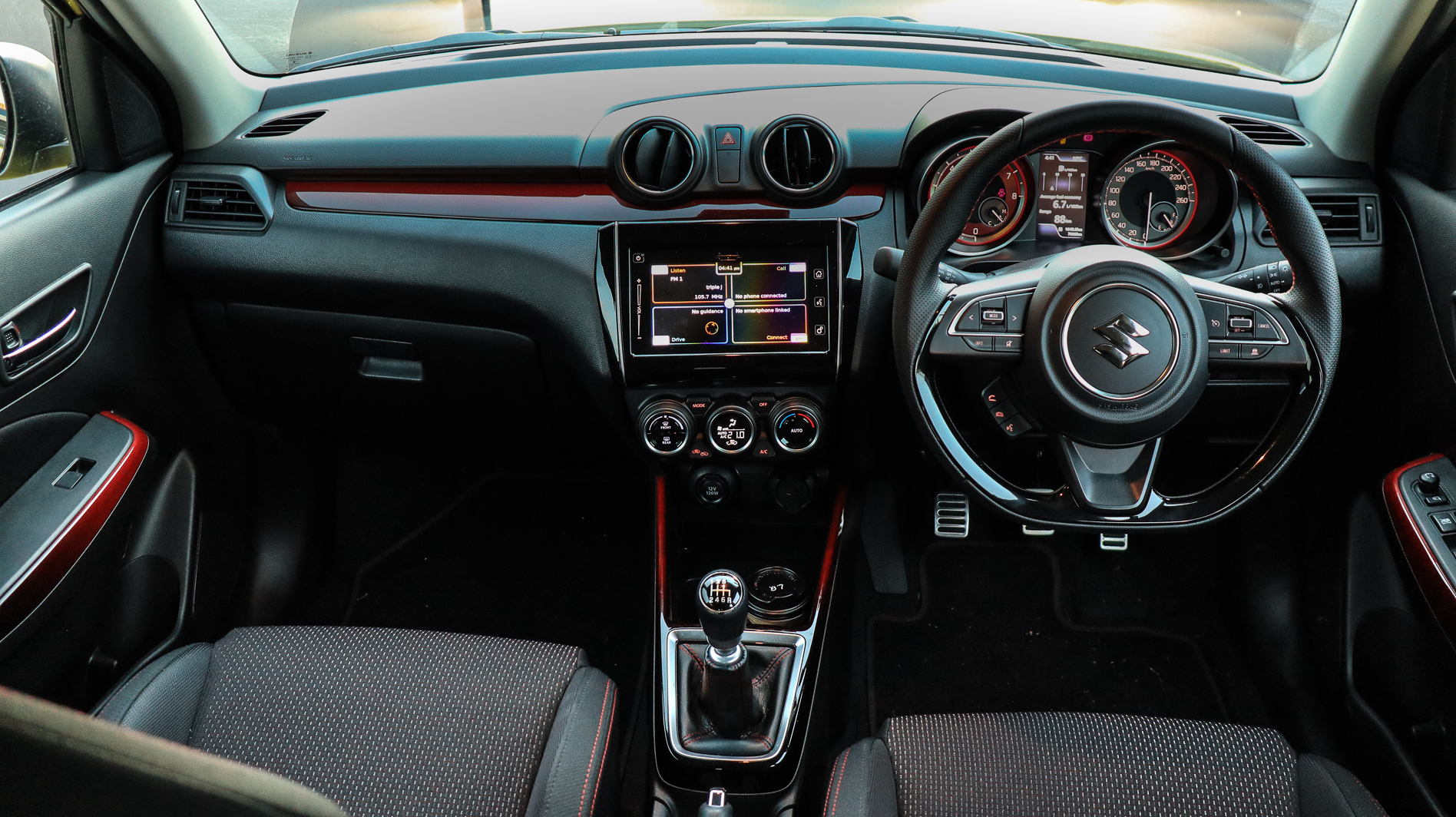
I also missed not having a centre console bin, but there is a small oddment dish in front of the cupholders which holds a phone and wallet.
The relatively high-roofed Swift also means that the rear seats are useful for taller humans, though four big units in the car would get pretty cosy. There is 265 litres of storage space behind the seats – call it two medium suitcases – and you can drop the seats to carry bigger items. You’ll get a bicycle in there with the wheels removed.
The six-speaker stereo’s sound output is pretty rubbish, and that’s exacerbated by a lack of sound deadening that allows a lot of road noise to get back into the squared-off cabin space… but that’s really not the point of the Swift Sport, is it?
How well does the Suzuki Swift Sport drive?
The steering wheel is chunky underhand and adjustable for height and reach, while the sport seat sits nice and low in the car. The clutch takes up just off the floor with plenty of feel and the right amount of weight, though the shifter is a little short for my liking and not especially precise underhand.

But up on the wheel, the Swift Sport instantly teleports me back to the heady early days of the hot hatch… only this one goes a lot harder.
The 1.4-litre engine doesn’t rev especially hard or sound very good, but its turbo-fed torque curve is linear and meaty, providing plenty of motivation from low revs at the right time.
Give it a toe full out of a tighter corner and the unweighted front wheel will chirrup and squirm and scrabble for traction. Sure, a limited slip diff would tidy that up, but to me, it just adds to the character of the car.
An overly short first and second gear, combined with a nose-led chassis tune and genuinely impressive steering feel, means you’re able to peg through a tightening radius bend in a gear higher than you’d expect.
The short wheelbase and wide wheel tracks mean the Swift hangs on well, and even though the multilink rear end has made way for a cheaper torsion beam set-up, the Swift Sport combines compliance and roll stiffness in impressive measure.

The well-modulated brake pedal engages quite close to the floor, which means heel/toe changes can be a little imprecise, but the actual spacing of the pedals is almost spot on.
Continental’s ContiSportContact 5 tyres are a nice spec, but I’d be upgrading even further to a SportContact 6 or similar to exploit that gorgeous chassis tune and torquey goodness, as well as to improve wet weather grip.
Likewise, I’d be upgrading the brake pads when they wear out to something with more feel and bite; a couple of cheeky laps on a wet track saw the pedal soften a bit, but better friction material and a higher-performance brake fluid swap would yield a set of mighty anchors for not a lot of dough.
On the highway and around town, the Swift is pleasant and well-mannered, with a ride quality that doesn’t stray into bumpy and sporty. The included adaptive cruise control works well at highway speeds, but it turns itself off when the speedo drops under 30km/h so be ready. Ahem.
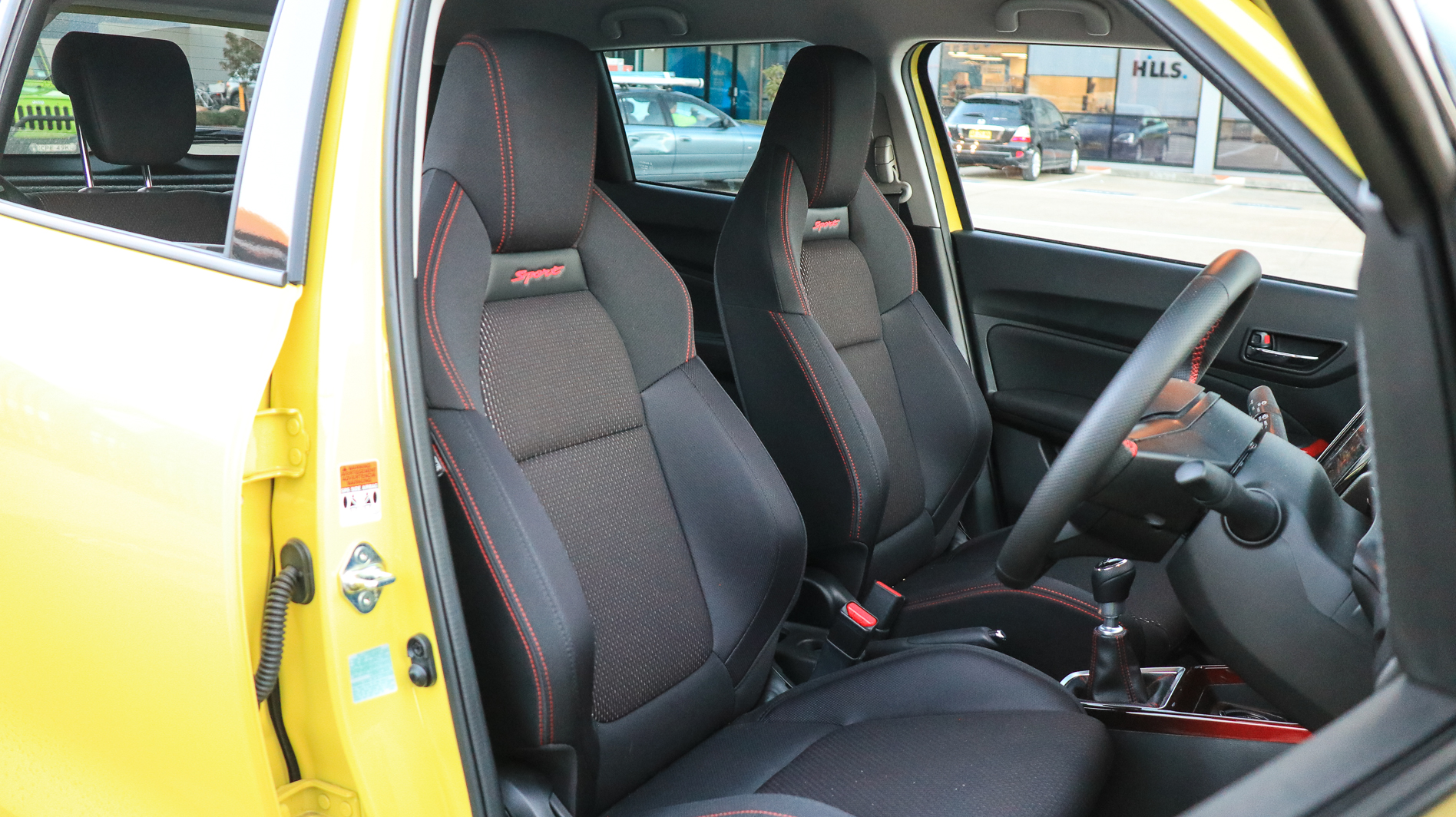
The noise intrusion can get annoying, and the tiny 37-litre fuel tank means there’s not a lot of range to play with – but a combined fuel economy average of 6.7 litres per 100km over 630km of testing (against a claim of 6.1L/100km) means juicing up the Swift won’t be expensive.
Speaking of that, Suzuki has fixed the first three services at $175 each, though it does recommend a notably short six-month/10,000km interval.
Suzuki’s standard warranty offer of three years and 100,000km is shorter than the industry average, too, and I’m not sure that the offer to extend that to five years and 140,000km is worth the stipulation of having to visit a Suzuki dealer every six months for five years.
The Swift Sport does pretty well in the safety stakes, with lane departure warning, AEB, seven airbags and a reversing camera as standard, though don’t wait for reversing sensors to beep – they aren’t there. It scores a top result of five ANCAP stars.
Verdict
The Suzuki Swift Sport extends the small Japanese company’s reputation for the weird and the wonderful – Jimny and Ignis, anyone? – and keeps the notion of an affordable hot hatch alive for a new generation… or for an older one looking for a hit of nostalgia.
Its warranty offering isn’t perfect, and it can be noisy on a highway, but owning a Swift Sport will put a smile on your face as few other cars can.
Specs
Body: 5-door, 5-seat hatch Drive: front-wheel Engine: 1373cc inline-4cyl, DOHC, 16v, turbo Bore/Stroke: 73.0 x 82.0mm Compression: 9.9:1 Power: 103kW @ 5500rpm Torque: 230Nm @ 2500-3000rpm Power-to-Weight: 106kW/tonne Transmission: 6-speed manual/auto Kerb Weight: 970/990kg Suspension: struts, coil springs, anti-roll bar (f); torsion beam, coil springs, anti-roll bar (r) Length/Width/Height: 3890/1735/1495mm Wheelbase: 2450mm Tracks: 1510mm (f/r) Steering: electrically-assisted rack-and-pinion Brakes: 285mm ventilated discs, single-piston calipers (f); 252mm solid discs, single-piston calipers (r); ABS, EBD, ESP, ASR Wheels: 17.0 x 6.5-inch (f/r) Tyres: Continental ContiSportContact5 195/50 (f/r) Price: $25,490



